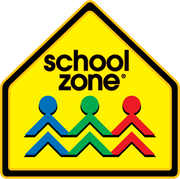Developing a preschool homeschool curriculum can seem like a big job, but with the right approach, it can be a rewarding time for both you and your child. A good curriculum helps your child develop important skills while fostering a love of learning. Here's how to build the perfect preschool homeschool curriculum.
Understanding your child's needs and interests
Every child is different, and knowing what they need and like is the first step in creating a good homeschool plan. Here are some tips to help you get started:
- Observe Your Child: Pay attention to what activities they enjoy and what topics they are curious about. This can give you clues about their learning style and interests.
- Assess Developmental Milestones: Refer to developmental milestone charts to understand what skills are typical for your child's age. This can help you set realistic goals.
- Consider Learning Styles: Some children learn best through hands-on activities, while others prefer listening or visual aids. Tailor your curriculum to suit your child's preferred learning style.
Core components of a preschool homeschool curriculum
A good preschool curriculum should cover several important areas to ensure overall development. Here are the core components you should include:
- Language and Literacy: Focus on activities that develop reading, writing, and communication skills. This can include storytime, alphabet games, and simple writing exercises.
- Math: Introduce basic math concepts such as counting, shapes, and simple addition and subtraction through fun activities and games.
- Science: Encourage curiosity and exploration with simple science experiments and nature walks. Discuss basic scientific concepts like weather, plants, and animals.
- Social Studies: Teach your child about the world around them, including family, community, and cultural awareness. Use maps, family trees, and community volunteer activities.
- Arts and Crafts: Foster creativity with various art projects and crafts. This helps develop fine motor skills and allows children to express themselves.
- Physical Education: Ensure your child gets plenty of physical activity through outdoor play, dance, and simple exercises to develop gross motor skills.
By including these main parts, you can create a fun and balanced preschool homeschool curriculum with print materials and online learning with Anywhere Teacher that helps your child grow and develop.
Tips for creating a balanced schedule
A good schedule helps keep a structured but flexible learning space. Here are some tips to help you create one:
- Set a Routine: Establish a daily routine that includes time for learning, play, and rest. Consistency helps children feel secure and understand what to expect.
- Mix Activities: Alternate between different types of activities to keep your child engaged. For example, follow a reading session with a physical activity.
- Include Breaks: Young children have short attention spans. Schedule regular breaks to give them time to relax and recharge.
- Be Flexible: While routines are important, be open to adjusting the schedule based on your child’s needs and interests.
- Incorporate Free Play: Allow time for unstructured play. It encourages creativity and helps children develop problem-solving skills.
- Use Visual Aids: Create a visual schedule with pictures to help your child understand the day’s activities. This can be a fun craft activity as well.
- Review and Adjust: Regularly review your schedule and make adjustments as needed. Every child is different, and what works for one might not work for another.
By focusing on these essential components and tips, you can build a preschool homeschool curriculum that is both effective and enjoyable for your child. Remember, the goal is to make learning a fun and engaging experience. Also remember that while consistency is key, it's also important to be patient and understanding. Every child is different, and it may take some time to find the routine that works best for your family.
Choosing the right resources
Building the perfect preschool homeschool curriculum can feel overwhelming, but choosing the right resources can make all the difference. Here are some tips to help you select the best materials for your child:
- Workbooks and Flash Cards: These are great for hands-on learning and reinforcing concepts. Look for age-appropriate workbooks and flash cards that cover basic skills like letters, numbers, and shapes. Consider the Big Preschool Workbook for comprehensive coverage.
- Learning Kits: Comprehensive learning kits can provide a structured approach to teaching. They often include a variety of activities and materials that make learning fun and engaging. Check out Jaz's Preschool Learning Pack for a great option.
- Early Readers: Introduce your child to the joy of reading with early reader books. Choose books with simple sentences and colorful pictures to keep them interested.
- Interactive Games and Activities: Digital learning apps such as Anywhere Teacher and interactive games can be a fantastic way to make learning enjoyable. Look for apps that are educational and age-appropriate.
- Free Resources: There are many free resources available online. Websites like School Zone offer free printables and activities that you can incorporate into your curriculum.
Remember, the key is to choose resources that match your child's learning style and interests. Don't be afraid to mix and match different types of materials to keep things fresh and exciting.
A combination of solid curriculum, balanced and consistent schedule, and the right resources lead to homeschooling success!











